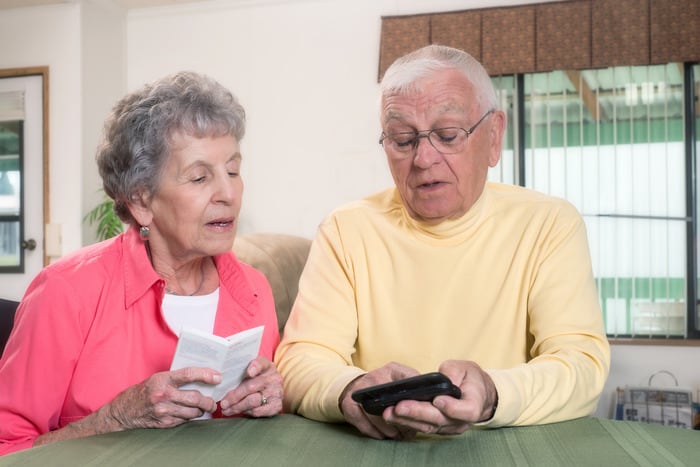
Over the past decade, elearning has exploded as an effective and convenient way for students to learn. In recent years, new innovations in space have further advanced the efficacy of this learning process. In particular, a new form of elearning called interactive elearning is pushing the boundaries of what this form of education can offer.
This coincides with an increasing need for digital literacy among a growing older adult population. Sadly, many people in this group are consistently the victims of cyberattacks and misinformation as a result of their lack of digital literacy.
Fortunately, interactive elearning is emerging as a ripe solution, along with other resources such as free college courses for older adults, that has the power to solve the elderly digital literacy problem once and for all. Understanding how interactive elearning can do this is key for gaining perspective on the future of the public’s relationship with digital technology.
Here is elearning for elderly digital empowerment and internet safety.
What is Interactive E-Learning?
Before understanding the impact that elearning can have on the elderly population’s relationship with the internet, it’s first important to understand what interactive elearning is.
Essentially, interactive elearning is elearning that places an acute focus on the interactivity between students and the learning materials they’re engaging with. Whereas traditional elearning materials were static and passive, interactive elearning takes learning beyond this to spur deeper comprehension and understanding.
Another key element found in interactive elearning experiences is customization. In this process, students interact with their elearning platform, and the lessons change depending on how they interact with it. This makes the learning process more unique for each individual student, ensuring they get the most out of their lessons.
Interactive elearning can include games, animation, audio clips, and multiple-choice quizzes. As a result of this more significant level of immersion, students can learn in a deeper way than they would have with traditional methods.
While this has amazing results for children and teens, it also has the potential to be amazing for older adults. Hopefully, as more awareness is brought to this form of learning and it becomes more accessible, a greater number of older adults will benefit from engaging in it.
Important Lessons for Older Adults that E-Learning Can Help Spread
As the world has become more and more digital, the number of dangers posing threats to older adults on the internet has increased. Fortunately, interactive elearning can be a great way for this part of the population to develop more robust internet skills.
Here are important lessons for older adults that interactive elearning can help spread.
Understanding Cyberthreats and Cybersecurity
In today’s day and age, cyber threats loom around every digital corner. From phishing scams to malware attacks, there’s no shortage of ways that cyber criminals try to exploit innocent victims.
Sadly, older adults are prime targets for these types of attacks and even cyberbullying because of their lack of knowledge about these threats. This makes them more vulnerable as they are more trusting of people and links on the internet.
Thankfully, interactive elearning classes can help teach older adults about these threats in an effective and convenient way. From exposing the dangers of the internet to making older adults more aware of ways that cybercriminals try to exploit people, these types of classes can empower older adults in an important way.
In addition, these interactive elearning classes can teach older adults about how to take advantage of cybersecurity practices and software. From explaining the function of cybersecurity measures to explaining how to install them, these classes can help the elderly population become far safer.
Discerning If Content is Reputable or False
One trap that many older adults fall into on the internet is believing false content to be reputable information. This can have a number of negative effects that harm the lives of older adults across the country.
However, this is a problem that can be solved with the right type of education. In particular, interactive elearning is a great way for this portion of the population to have lessons that can help them be more discerning during their time on the internet.
These lessons can include topics such as what the telltale signs of false information on the internet are along with lessons about how to find reputable sources. This can empower older adults to have the skills and ability to always discern what is true and what is false on the internet.
Understanding Mobile Devices and Smartphones
Over the last decade, smartphones have become a normalized part of society. From public parking in cities requiring people to pay through their phones to healthcare organizations utilizing apps to communicate with patients, understanding how to use these devices is vital in today’s world.
Unfortunately, many older adults struggle to understand and use smartphones in today’s world. This means they are alienated from many activities and are made to feel like they aren’t being served.
However, interactive eLearning is the perfect way to change this. In fact, this type of learning can even be engaged in on smartphones. This makes it a great way for older adults to become more familiar with smartphones and how to use them.
These lessons can include topics such as how to use banking apps safely, how to navigate one’s smartphone, and even how to get the most out of one’s phone. Ultimately, this form of education will result in a more informed, capable, and empowered older adult population in America.

Interactive E-Learning Puts Power Back Into the Hands of Older Adults
Though the world has evolved in many exciting and beneficial ways over the last decades, some of these innovations have left older adults more vulnerable. Thankfully, this doesn’t always have to be the case.
Interactive elearning has emerged as an amazing educational tool that can help older adults cultivate a deeper and more practical understanding of the internet and the threats that come with it.
By making this form of education more accessible, older adults across the country can be more empowered and confident in their abilities to utilize technology and navigate the internet.